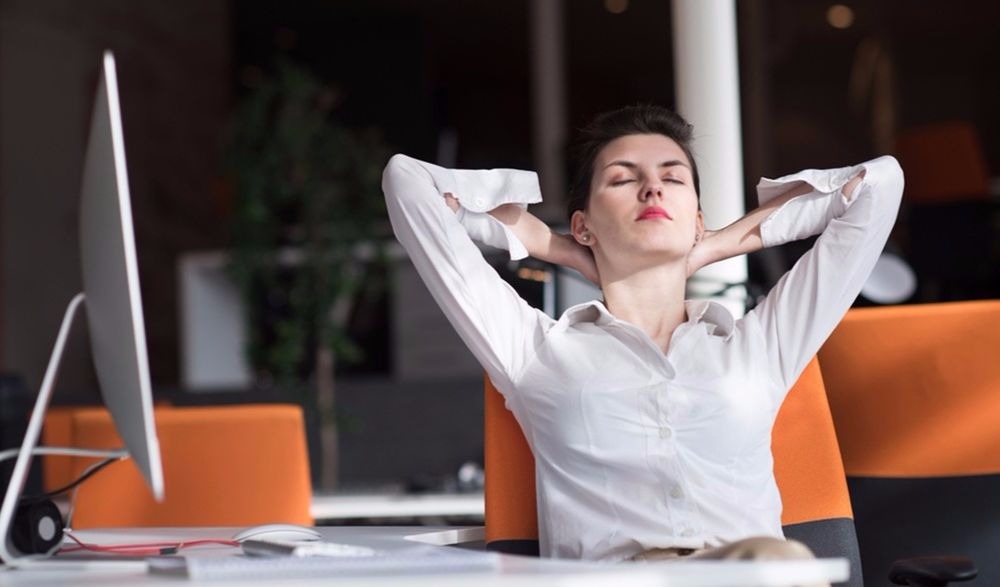Top 10 Body Pains Of A Desk Warrior – Part 1
 Contributed by
Dr Gary Tho
October 27, 2017
Contributed by
Dr Gary Tho
October 27, 2017

You can experience lasting pain from working at a desk for as little as two hours! Some of us spend the majority of your waking hours sitting at work, slumped over keyboards or piles of papers.
Dr. Gary addresses your body’s pain points in his new book The Pain Free Desk Warrior – Free Yourself From Aches And Pains. Here he shares an excerpt in hopes that you can start living your life free of pain, fatigue and illness!
I have been conducting corporate health workshops since 2007. Each time I run a health talk or workshop, I ask who has back pain or neck pain. It’s amazing that out of the 20 people in a room, 16 to 20 hands are raised.
In the last three months, I’ve surveyed over 600 desk warriors from SMEs and MNCs living in Singapore with shocking results. Those who experienced neck pain is at 80%, while those who reported pain in more than one part of the body was at 70%.
Here are the top 10 most common pain problems and their underlying causes:
1. Neck And Shoulder Pain
In 2014, Google released the Consumer Barometer, a research study which reported that Singapore has the highest smartphone penetration in the world at 85%. Nearly eight out of 10 Singaporeans use two or more connected devices.
Our constant use of smartphones, tablets, and computers throughout the day is one of the biggest factors for neck and shoulder pain.
Proximal crossed syndrome is a result of prolonged technology use, poor posture, and lack of movement. An underlying feature of this syndrome is Forward Head Posture (FHP), a position you adopt when you stick your head out when starting intently at your computer, book or phone. It results in excessive, unnatural stress and compression on the bones, joints, nerves, and discs of the lower neck. Tense muscles also add to the problem and pain.
Besides discomfort and pain in the neck and shoulder, this part of your spine will degenerate faster and can cause serious symptoms if nerves become compressed. Moreover, FHP will place your upper neck in extension compression and can result in headaches.
A small number of people had injured their shoulder joint. Common injuries like tendonitis, rotator cuff strains, and tears, as well as joint and ligament sprains are usually due to trauma or repetitive stress, like playing one-handed sports.
2. Lower Back Pain
When your back is bad, simple things like getting out of bed or putting your pants on can be agonizing. In Singapore, lower back pain is the second most common pain problem for desk warriors, with 39% having experienced it. The World Health Organization states that lower back pain is the leading cause of disability worldwide.
Common causes of lower back pain include not sitting properly and unsupported and bending without the correct muscle engagement. Prolonged sitting and standing can quickly accumulate spinal tension and compression leading to more symptoms.
Footwear, specifically men’s dress shoes and women’s heels and hard, flat surfaces can contribute to stress. Sitting cross-legged or with your wallet in the back pocket can misalign and lock up joints in your pelvis and lower back.
The root cause of back pain is injury and compression to the spinal discs (commonly referred to as slipped disc or disc bulge), pinched nerves, joint sprain, misalignment and injury, ligament and muscle strain, and restricted movement.
3. Headaches And Migraines
There are a lot of types of headaches. The three most common forms I’ve noted in private practice are tension headaches, cervicogenic headaches, and migraines.
Tension headaches are caused by stress – both physical and mental or emotional. These headaches are felt on both sides of the head.
Migraines have specific symptoms and feel like a pounding or throbbing pain. They usually last one day and can persist for up to 72 hours. The pain is felt almost always on one side. The pain is located around the temple and eye region, though some complain of pain at the back of the head. Nausea is a common symptom that occurs with migraines. Moreover, migraines are disabling and can cause severe pain.
A cervicogenic headache is the last of the three common headache conditions – and it is the least recognized. It originates from the neck and the underlying problem is the joints in the upper neck that join to the base of your skull can sprain, compress and misalign, causing pressure on the nerves, ligaments and small muscles in the area.
4. Upper Back Pain
Stiffness, aches, and pain between the shoulder blades are a common occurrence though many people complain more of stiffness than pain. These muscles accumulate tension easily because of two reasons. First is the hunched over, rounded shoulders that put constant stress on the muscles, spine, and ribs of the upper back. Second is forward head posture.
5. Fatigue
Fatigue is common and a sign of overwhelm and burnout. Working long hours and not getting enough rest are the most common causes. Fatigue affects people in different ways. For some, it simply means being tired. For others, it may manifest as loss of motivation, low energy, heaviness, poor sleep quality, a change in appetite, stomach upset, headaches or tight muscles. Fatigue is detrimental to concentration, performance, and life enjoyment.
If you have a better idea of the pain your experiencing as a desk warrior and it’s underlying cause, tell me about it in the comments!
Stay tuned for the other top five causes of the Top 10 Office Pain Points in Part 2.
Get a copy of Dr. Gary’s book ‘The Pain-Free Desk Warrior’ here!











Sorry, the comment form is closed at this time.